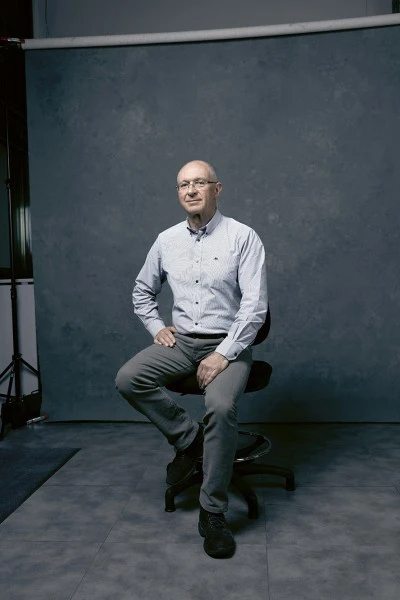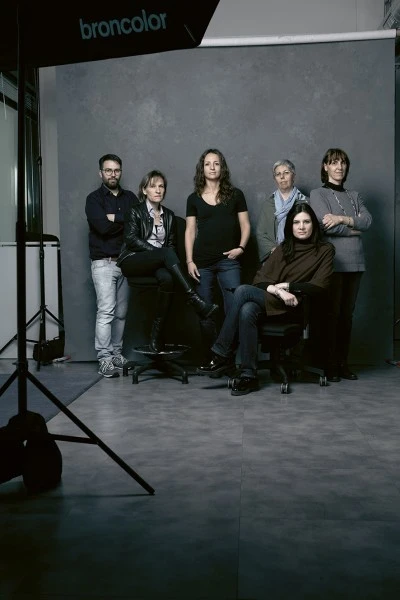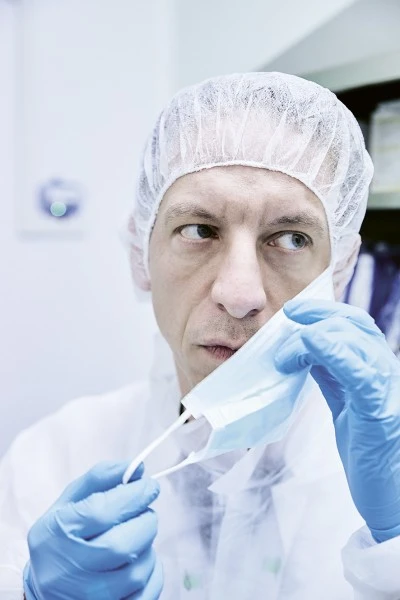Maurizio Franco Mariani loves challenges and dislikes routine. So when the scientist was offered a position more than 10 years ago at Advanced Accelerator Applications (AAA) in northern Italy, he accepted immediately. His mission at AAA: develop a new therapeutic approach using radioactive particles.

“During my entire career, I have never opted for the easy solution,” says Mariani, who trained as a medical doctor before focusing on pharmacology and drug development. “When Stefano Buono, the founder and CEO of [AAA] at the time, approached me in 2008 with their idea to develop a nuclear medicine therapy, I immediately grabbed the opportunity because this was an absolutely novel field.”
Leaving a large pharmaceutical company for AAA was one of his boldest career moves. AAA, which was founded in 2002 and is now a Novartis company, had only a few dozen employees at the time. But they had the clear vision to develop innovative cancer therapies using high-energy radioactive particles called radionuclides.
At that time, only a few specialized clinics in Europe and the US had developed cancer treatments using small amounts of radioactive particles. But such therapies were produced manually by combining a cancer-binding compound with a radioactive agent, which damaged the DNA of tumor cells by emitting high-energy radioactive particles.
Developing a standardized nuclear medicine that could be shipped to patients around the world was a complex and seemingly insurmountable task. However, Mariani and his team were up for the challenge.
An emerging medical field
When AAA was founded in 2002, nuclear medicine was a well-established medical field. But its potential in both therapeutics and diagnostics had not been fully realized.
Tracing its origins back to the turn of the 20th century with the discovery of radioactive particles by Henri Becquerel and Marie Curie, the field received an early boost in the 1930s following the efforts of US physicist Ernest Lawrence and his physician brother, John, both of whom worked at the University of California, Berkeley.
Ernest Lawrence successfully constructed a particle accelerator that artificially produced radioactive isotopes, or radionuclides. His brother was among the first to apply such molecules in medicine. John used a variety of radioactive particles, produced with the help of an apparatus called a cyclotron, to treat leukemia and other forms of cancer.
The work of John Lawrence – considered the father of nuclear medicine – sparked an avalanche of research. Physicists discovered new radioactive particles with the help of cyclotrons, enabling physicians to apply these radionuclides in different disease areas.
Development was especially fast in the realm of diagnostics because the high-energy particles helped physicians easily locate cancers in the body in a non-invasive way.
As part of this diagnostic imaging procedure, patients receive very small doses of a radioactive substance that leaves traces in the body. This substance can be measured by imaging tools, including positron emission tomography (PET) and single-photon emission computed tomography (SPECT), which became more widespread around the turn of the millennium.
Nuclear medicine imaging
It was against this background that AAA started to produce radioactive drugs for PET and SPECT imaging for hospitals and medical centers, most of which were not equipped to produce such drugs on their own.
AAA founder Buono, who had worked at the European Organization for Nuclear Research (CERN), had a deep understanding of the underlying physical process and was aware of the difficulties of delivering these products in time.
The challenge was not only to produce the radioactive imaging agents. The half-life of the radioactive molecules they contained, which can range from a few hours to a few days, also puts pressure on distribution because the products containing these particles need to be delivered in time to maintain their activity.
AAA was up to the task. The company succeeded in producing diagnostic imaging products containing such radionuclides and established a distribution network to reach a broad range of hospitals in Europe.
A long path
Emboldened by this success, AAA aspired to achieve more and wanted to find out whether it was possible to develop a targeted radionuclide-based therapy that could also be shipped to hospitals around the world. The challenges, though, were immense.
“AAA was a small company with limited funds,” says Mariani. “We had to find a way to be as effective and fast as possible, and do a lot of heavy lifting to achieve our goal of developing and producing a standardized nuclear medicine therapy.”

The first hurdle was to find a suitable molecule that could be used for a potential treatment and had a long enough half-life to be distributed to patients. The search for such a molecule took years before Mariani and his team discovered a small peptide able to link to a radionuclide that had a half-life of several days and showed effectiveness in treating tumors.
Before the AAA team could begin clinical trials, however, the company had to develop a ready-to-use, commercial-grade product that could be shipped to hospitals and reach patients in the fastest way possible.
While a small team of nuclear chemists created a seamless production process to combine the cancer-binding molecule with the radionuclide, another group worked to establish a global distribution network to transport the treatment to hospitals within two or three days of production.




